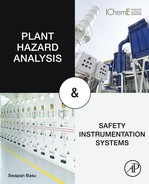5.0. Quantitative Risk Analysis in Brief
From DNV, one defines quantitative analysis as follows; “a QRA can be defined as the formal and systematic approach of identifying potentially hazardous events, estimating the likelihood and consequences of those events, and expressing the results as risk to people, the environment or the business.” In a way, it can be conceived as a quantification of effects of risks on project objectives.
5.1. Requirements for Quantitative Risk Analysis
Usually these are completed after qualitative hazard analysis is over to address the following issues:
• Determination of probability of achieving the project objective.
• Risks prioritization.
• Improve the identification of opportunities and threats (ISO31000:2009).
• Identification of realistic cost, schedule, and/or scope and cost–benefit analysis.
• Comply with relevant legal and regulatory requirements and international norms (ISO31000:2009).
• Project outcome quantification with associated probability.
• Can be modified to fit specific need of a company.
• Improve governance (ISO31000:2009).
• Effectively allocate and use resources for risk treatment (ISO31000:2009).
• Good selling tool to management, and have less chance of disagreement.
• Determination of contingency and contingency planning.
• Improve organizational learning and resilience (ISO31000:2009).
• Guidance for project management decisions under various uncertainties.
5.2. Method Outline
There could be several methods for QRA based on the objective of the analysis. In process plants, this can be carried out, with any or all of the objectives listed below in line with DNV.
• An analysis of the severity/consequence of accident scenarios.
• Predicted number of fatalities/casualties for each scenario.
• Individual, group, or societal risk.
• Potential loss of life.
• Location-specific risk.
• Further analysis of accident scenarios that are ALARP (As Low As Reasonably Practicable).
• Preventative/mitigation measures.
• Sensitivity of results to uncertainties and assumptions.
In order to carry these out in most of cases, QRA and modeling techniques, sensitivity analysis, monetary analysis, decision tree, and simulation are used. Major coverage in these methods shall include probability modeling, and consequence modeling, cost benefit analysis and risk mitigation techniques. Typical QRA has been depicted in Fig. V/5.2-1. As there will be a requirement of very large database (e.g., tangible–intangible asset of the company, historical attitude of the company, to name a few), there will be a need for a suitable software tool to be utilized by an experienced person capable of handling the same. QRA is common in the places where there is threat from explosion and toxicity. In this connection, it is better to note that major bottleneck in QRA could be:
• Inherent lack of data, and lacking in analyzing capability.
• Proper quantification of risks.
• Compromise monetary expected value.
5.3. Documentation and Information Collection
A number of documentations are necessary to carry out QRA:
• Organizational and environmental process assets.
• Project scope statement.
• Risk management plan.
• Project management plan (cost and schedule).
Like various other methods, information is gathered through interview (to get the idea of probability and impact of risk on project objectives from concerned persons), collection of detailed documentation, and expert judgment.
5.4. Major Output From Plant Quantitative Risk Analysis
Major output for plant or process technical QRA shall include, but not be limited to, the following issues:
• Risk register updates (to indicate risk result of QRA).
• Probabilistic analysis of the project (including time and cost).
• Forecasts of potential project schedule and cost results.
• Project duration and completion time.
• Cost estimate.
• Contingency requirement.
• Contingency planning.
• Prioritized list of quantified risks.
• Trends in quantitative risk analysis results (after repetition).
A brief QRA process has been depicted in Fig. V/5.4-1. Probabilistic QRAs are also used. In the probabilistic approach, first a deterministic model is developed, then numerical values are replaced by probability structure and distribution patterns to get the output.
..................Content has been hidden....................
You can't read the all page of ebook, please click here login for view all page.

